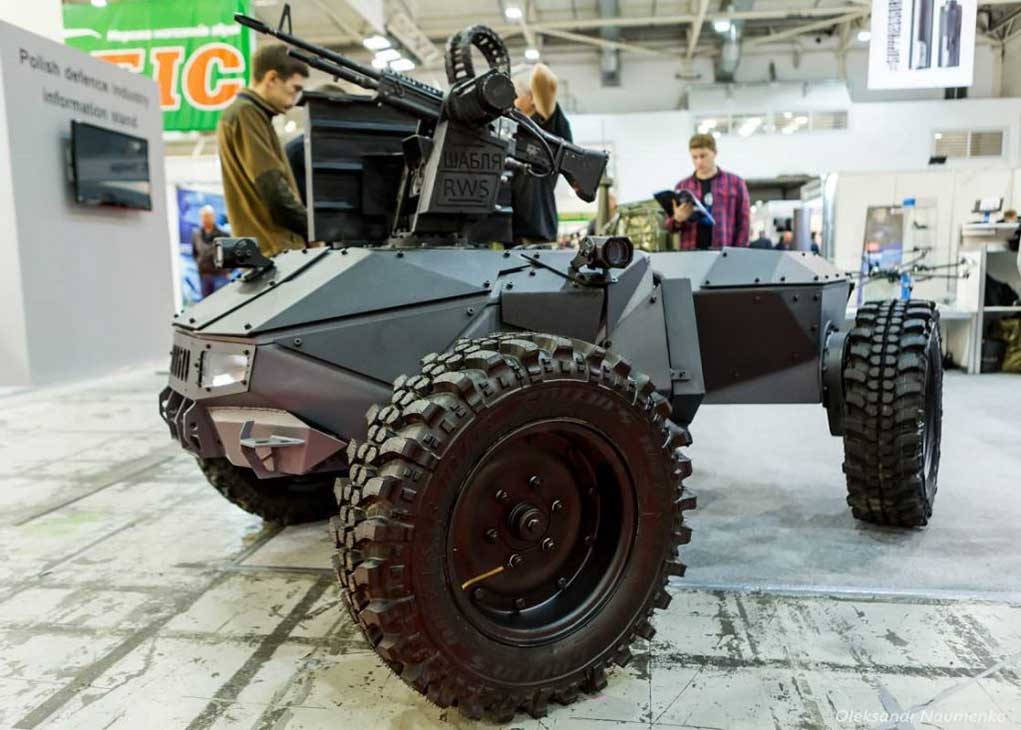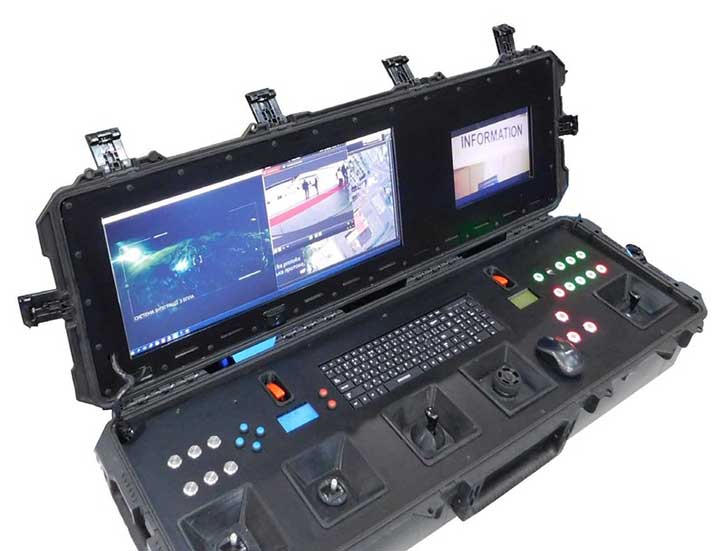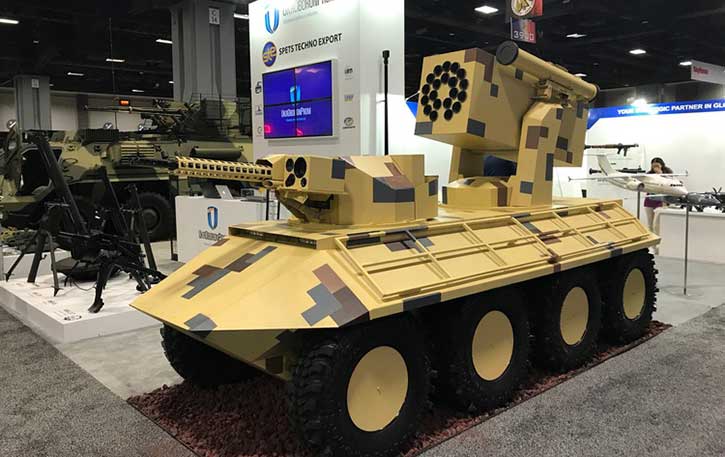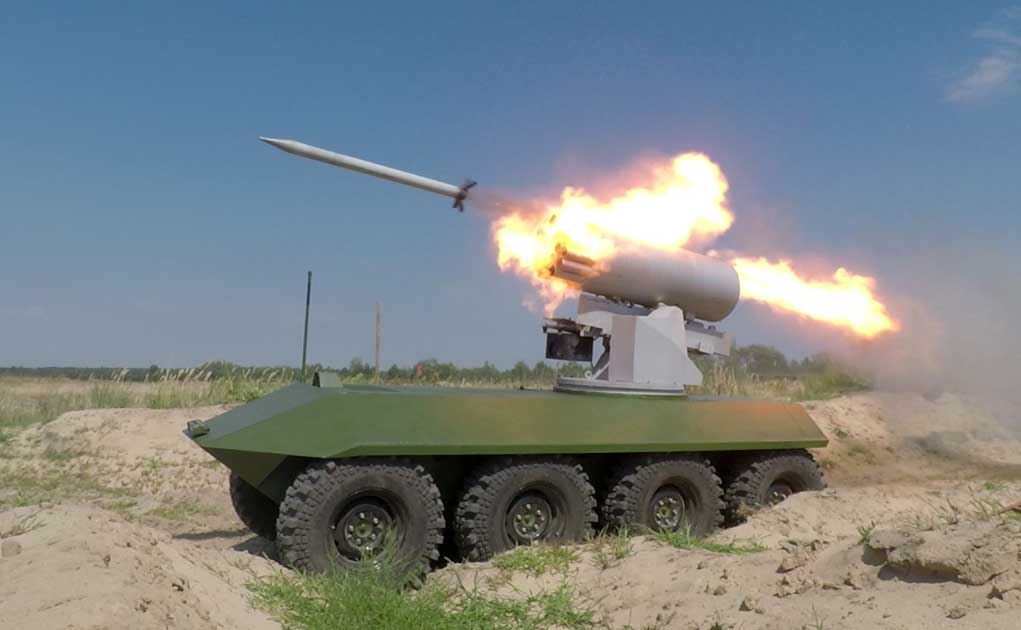In response to the hybrid warfare with the Russian Republic, industries across Ukraine were called to improve the warfighting capabilities of the Army by improving existing hardware and producing innovative concepts that could meet the current and future hybrid challenge. Remotely operated systems and capabilities were high on the agenda, with several remotely controlled weapon stations, turrets, and robotic ground vehicles.
Related post: New Trends in Russian Combat Robots
Two types of combat robots have evolved in Ukraine in recent years – the Phantom and Ironclad. Both are configured with radio and fiber-optic links to ensure operability in EW contested environment and maintain operability under radio silence. Both support flexible configurations to support dismounted operations, either as load carriers or remotely controlled weapon carriers.
Supporting mesh network communications, the Ironclad may be more suitable for close-in integration with troops, in a ‘forward command’ style operation while the Phantom is designed to provide fire support commanded from few kilometers back. With the rapidly evolving combat UGV class of weapons on both sides, it is likely that Ukraine could become the first robotic battlezone, where robots could engage each other as they support government forces on one side and paramilitary forces on the other.

Ironclad Robot UGV
Global Dynamics – Ironclad (first displayed in the Security Expo in Kiev in October 2018). A reconnaissance robot that weighs 1,100 kg, GVW, carrying 200 kg of payload. The wheeled robot comprises two sections, each using two wheels. The front carries the Shablia lightweight weapon station that mounts a 7.62/12.7 mm machine gun and two guided missiles. At a dry weight of about 100 kg, this maximum load configuration takes most of the payload capacity. Alternatively, users may opt to unload the RWS and carry loads on the rear module on logistical support missions. This articulated design enables the vehicle to cross obstacles. The robot is powered with a 12kW diesel generator that charges the batteries and power the four drive motors. The system sustains up to 10 hours or 130 km, traveling at a road speed of up to 20 km/h, or one hour of operation on battery power.
Related post: Ironclad UGV – BAE Systems
Ironclad uses an advanced radio link that supports mesh networking, to automatically extend radio coverage in areas where multiple users operate such radios. This capability provides better resilience and resistance to jamming and electronic warfare to the network as a whole, and to each subscriber. Fiber-optic control is also provided to enable operation under radio silence.

Fantom II UGV
A wheeled 6×6 tactical multipurpose vehicle, the Fantom (a.k.a Phantom) was developed in Ukraine and unveiled in 2016 at the Arms & Security Expo in Kiev, Ukraine. At a combat weight of just over one ton, the Phantom uses a 30kW diesel-electric hybrid system to accelerate to a maximum speed of 38 km/h. The vehicle can be used to assist forward guard positions, providing protection, firepower and fire support to manned guards, assist in reconnaissance missions and provide energy support for forwarding troops. The system uses a radio control channel with a distance of 20 km, or fiberoptic link spanning five kilometers. The vehicle is equipped with a stabilized, remotely operated weapon station mounting a 12.7mm heavy machine gun and Barrier guided missiles

The latest variant of the Phantom, the 8×8 Fantom 2, was displayed by SpetsTekhnoExport at the Unmanned Systems Exhibition and Conference) in Abu Dhabi in October 2017. This vehicle weighs 2.6 ton GVW. It can travel to 130 km powered by an 80kW hybrid propulsion system accelerating the platform to a speed up to 60 km/h. It operates a secure radio control link extending up to 20 km range, of jam-proof fiber optical link that extends to five kilometers. As a longer platform, the 8×8 Phantom 2 can carry bigger weapons such as a full RS-80PO rocket pod or a twin-barrel 23mm cannon and four Barrier anti-tank guided missiles with an effective combat range of up to 5,000 meters.





















